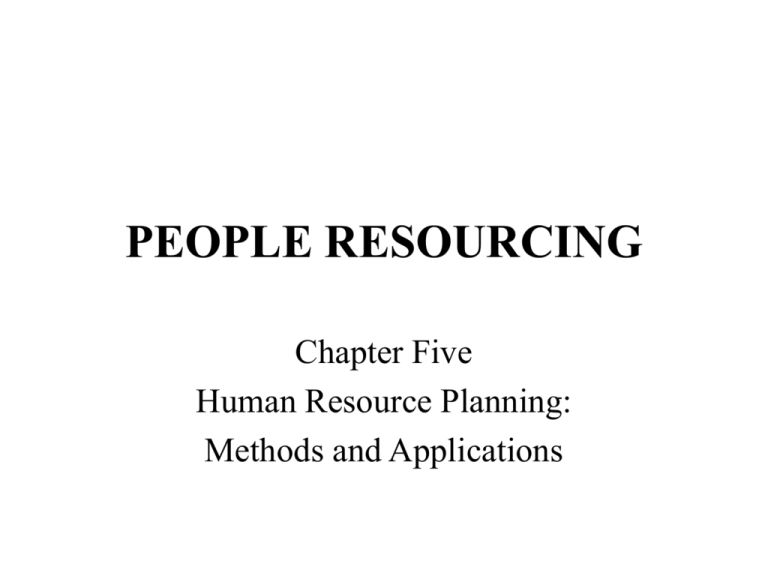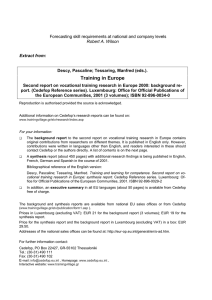people resourcing
advertisement

PEOPLE RESOURCING Chapter Five Human Resource Planning: Methods and Applications The techniques of human resource planning are some of the most involved and complex activities carried out by employee resourcing professionals. By contrast, the basic principles on which they are founded are straightforward, with a potential significance that is readily understood. There are different uses of the term ‘human resource planning’ by different authors. The focus is on forecasting the supply and demand of labour and developing plans to reconcile any future gap that is identified between the human resources an organisation needs and those to which it is likely to have access. Stages in human resource planning The principal concern is assessing an organisation’s position in relation to its labour markets and forecasting its likely situation in years to come. It is thus mostly used to formulate the data on which plans of action can be based, rather than actually to draw up those plans. Stages in an HR planning cycle: 1. Forecasting future demand for human resources 2. Forecasting future internal supply 3. Forecasting future external supply 4. Formulating responses to the forecasts. Forecasting future demand The process of assessing demand can be defined as ‘analysing, reviewing and attempting to predict the numbers, by kind, of the manpower needed by the organisation to achieve its objectives’. It depends on: • the time-scale that the forecast is intended to cover • the nature of the activities carried out by the organisation. Four basic categories: • systematic techniques • managerial judgement • combining systematic and subjective approaches • working back from costs. Systematic techniques • Time series – estimating future requirements from an analysis of past and current experience. Appropriate only in relatively stable business environments. • Work study – study of individual tasks or processes in order to establish the numbers required to complete them most effectively and efficiently. • Incorporating productivity trends into the time series calculation. Managerial judgement Bases decisions on the subjective views of managers about likely future human resource needs. This is often the only option in situations where the business environment is highly volatile. ‘Delphi technique’ – a systematic approach to decisionmaking that aims to introduce a measure of objectivity into the process by which forecasts are made on the basis of managerial judgement. Working back from costs The process begins with the future budget for staff costs. The HR planner then works out, given that constraint, how many people and at what salary level will be affordable. The focus is on designing organisational structures and methods of working that will permit the budget to be met Forecasting internal supply Analysing the current workforce department by department or by grade before estimating the numbers likely to remain employed and the skills they are likely to possess. Techniques: • wastage analysis • stability analysis • cohort analysis • internal promotion analysis. Forecasting external supply Having established the future demand for different kinds of employee, and how these needs will or will not be met internally, it is necessary to give attention to filling the gap and reconciling supply and demand using the external labour market. Organisations must turn to statistical information on local, national and even international labour markets. Computer applications There are many different ways in which IT can be used to support and undertake human resource planning. Three broad categories: • Information provision – Computerised personnel information systems (CPIS) allow more data to be stored, and permit far swifter generation of reports. • Modelling – The ability of computers to handle vast quantities of data permits highly complex formulae concerning numerous variables to be built up, and results to be calculated in seconds. • Presentation – User-friendly reports make data easy to interpret. This can help significantly with HR efficiency and credibility.










